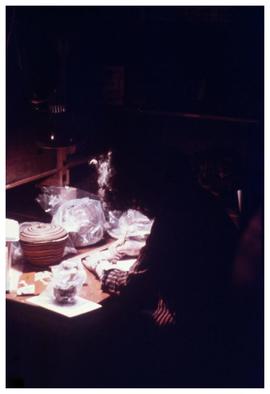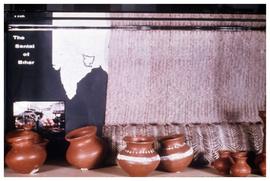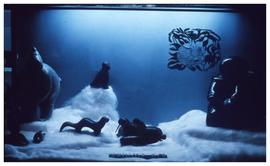Zona do título e menção de responsabilidade
Título próprio
Old museum student activities [slides]
Designação geral do material
Título paralelo
Outra informação do título
Título e menções de responsabilidade
Notas ao título
Nível de descrição
Dossiê
Código de referência
Menção de edição
Menção de responsabilidade da edição
Menção da escala (cartográfica)
Menção da projecção (cartográfica)
Menção das coordenadas (cartográfico)
Menção da escala (arquitectura)
Autoridade emissora e denominação (filatélica)
Zona de datas de criação
Data(s)
Zona de descrição física
Descrição física
4 photographs : col. slides ; 35 mm
Zona dos editores das publicações
Título próprio do recurso continuado
Títulos paralelos das publicações do editor
Outra informação do título das publicações do editor
Menção de responsabilidade relativa ao editor do recurso contínuo
Numeração das publicações do editor
Nota sobre as publicações do editor
Zona da descrição do arquivo
Nome do produtor
História biográfica
Harry B. Hawthorn was born in Wellington, New Zealand in 1910. He completed his B.Sc (1932) and M.Sc. (1934) with the intention of becoming a civil engineer. During the Depression Hawthorn worked for New Zealand's Native School Service. Unable to pursue his studies in science in the small communities in which he worked, he became interested in the humanities, studying history extra-murally. He earned his B.A. in 1937. The years spent in the Native School Service had an arguably strong influence on Hawthorn. He was offered and accepted a fellowship to study anthropology at the University of Hawaii in 1938. The following year he was offered another fellowship to study anthropology at Yale University where he completed his PhD in 1941. While there he met Audrey Engel who later became his wife.
Hawthorn's appointment to the faculty of the University of British Columbia in 1947 added Anthropology to the title of the Dept. of Economics, Political Science and Sociology. His objectives upon coming to UBC were to: establish his discipline in an academic setting of the University and in the Province; to offer anthropology as a contribution to the general education of a broad group of students and to begin the selection and training of a few specialists; to establish problems for ethnological research; and, in keeping with conviction that scholarship should be useful as well as decorative, to discover possibilities for the practical application of anthropology in the Province and the country.
In 1949, Hawthorn was asked by the Provincial Government to undertake a study of the problems confronting Doukhobors in British Columbia. He assembled a team of scholars from various disciplines to investigate different aspects of the issue. The subsequent report (1955), helped to ameliorate the Doukhobors and encouraged increased cooperation among the Doukhobors, non-Doukhobors and the government. It also proved to be a valuable experience for members of the research team. In 1954, the Department of Citizenship and Immigration commissioned a comprehensive study of B.C. Indians. Hawthorn again assembled a research team which completed its study in 1956. In that same year Anthropology, Sociology and Criminology separated from Economics and Political Science to form a new department with Hawthorn as its head, a position which he held until 1968. Hawthorn undertook direction of a third large-scale interdisciplinary research project in 1963 -- The Survey of Contemporary Indians of Canada (1966, 1967). The project not only influenced the development of native affairs in Canada but also contributed to development of Canadian anthropology by providing practical and research experience for a number of young scholars.
In addition to the above-described activities, Hawthorn and his wife Audrey also played a significant role in the development of the UBC Museum (later the Museum of Anthropology) and, in particular, the development of an outstanding collection of West Coast native artifacts.
Hawthorn served as a member of the UBC faculty until his retirement in 1976. He died in 2006.
História custodial
Âmbito e conteúdo
Zona das notas
Condição física
Fonte imediata de aquisição
Organização
Idioma do material
Script do material
Localização de originais
Box 2.10




